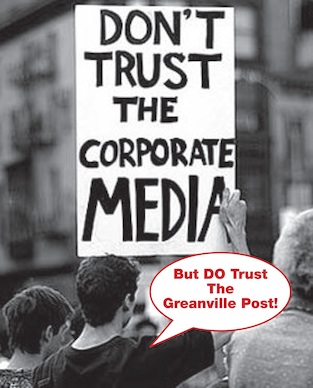Revolt, Rebellion and Revolution: some precedents.
Pre-Revolution in America and Successful Revolution in Russia
Non-violence is not enough.

Gaither Stewart
(Rome): As a contribution to the ongoing discussion in America about the what-to-do of the post-OWS period, I have listed here some of the major tactics employed in Russia dating from 1860 which eventually developed into a successful strategy in the Russian Revolution of 1917 that shook the world.
[This essay was first published on Aug 8, 2012]
In the biography, Dostoïevsky, by Henri Troyat of the Academie Française, I ran into the following description of the pre-revolutionary events in the era of the liberal and modernizing Tsar, Alexander II. In the years 1861-62, the Tsar and his civil servants, who had just eliminated serfdom, quickly came to understand that that long-awaited act had come too late to satisfy the truly liberal forces in Russia.
The events depicted by Troyat in which Dostoevsky himself was an unwilling actor led inexorably to the first Russian Revolution of 1904-1905 and subsequently to the Great Russian Revolution of 1917 ultimately led by Lenin.
In late 1861, the rumbling of complaints and protests echoed across Russia. Revolt was the order of the day:
Opposition literature began circulating from hand to hand among university youth in ferment: their demand was not for reforms but for systemic change. Liberal ideas turned the heads of students who were reading revolutionary pamphlets and holding meetings and organizing libraries of forbidden literature similar to the job carried out by leftwing web sites today.
Students demanded a new social-political system.
They created funds for social assistance to the needy and began publishing their own liberal (then considered revolutionary) materials.
They created their own courts for judging their fellow students.
Lecture halls became theatres of discussion, not teaching.
After student meetings in university halls were banned, students took to the streets. Authorities arrested them and released them two and three time a day.
Finally leaders were imprisoned in the state prison in St. Petersburg. Those arrested were delighted with their sudden fame. The entire capital city spoke of their courage and at visiting hours hordes of people pressed around the jail.
When the government in desperation shut down the university, students and professors began holding lessons on the streets, a kind of mobile city university. The government forbade that, too.
Agitators became more fiercely revolutionary. Secret societies spread.
At that time the nihilistic revolutionary organization Land and Liberty was born to lead the struggle against a government that revolutionaries condemned as the “worst enemy of the people.”
The slogan “Long live the Russian social and democratic republic” was born. Appeals “to young Russia” were printed and distributed from house to house.
“To arms,” now rang the revolutionary cry. “Death to members of the imperial party. Strike them in public places if those scum have the audacity to show their faces. Strike them in their homes. Strike them in the lanes of the villages and on the avenues of the big cities.”
And more: “One hundred thousands persons in Russia (today’s infamous 1% in the USA) oppose the common weal.”
In 1862, fires broke out in St. Petersburg. Entire districts of the capital burned for weeks.
Revolutionaries considered such events as necessary and inevitable.
Mirroring the very nature of the Russian people, rebellion in Russia matured quickly and inexorably transformed into violence.
1905: The First revolution
The ideas and men of the Sixties in Russia provided the framework for the first revolution, that of 1905. Trade unions had become more and more active in the big cities.
The first workers councils—the soviet in Russian—were organized.
The approach of the Social Revolutionaries to social problems was from the bottom up. The masses were seen as the instrument of change.
Although the Intelligentsia felt a gulf between themselves and the people, early on Lenin’s emphasis was always on the people. And on cooperation between consumers and producers in the form of cooperatives.
A widespread opinion was that the upcoming revolution had to be national in character, expressing the demands of workers, peasants, and also intellectuals. The goal was to reorganize the social structure according to Socialist principles.
The use of violence was never an issue. Revolutionaries assassinated Tsar Alexander II in 1881 and tried to “execute) his on Tsar Alexander III. “Socialist Revolutionaries” used individual terror against high-ranking reactionary members of the national government like the reactionary Minister of the Interior (and the political police) who was assassinated by a Socialist Revolutionary terrorist brigade.
When troops opened fire on tens of thousands of unarmed workers, an event historically known as “bloody Sunday” (by the way, a false flag operation organized by a police infiltrator into worker ranks), the die was cast. The Terrorist Brigade responded by assassinating the Tsar’s uncle, the detested Governor-General of Moscow.
Violence and terror increased. Nation-wide strikes, demonstrations, riots gained momentum. Strikes brought Russia to its knees.
Demands for change spread such as demands of abolition of the death penalty and the court-martial.
Sailors mutinied.
It was revolution and the Tsar knew it.
At that time Lenin returned from abroad and called for armed uprising. In Lenin’s thinking, victory didn’t matter. The uprising was what counted. Uprisings, successful or not, were intended to shake the foundations of autocracy.
Constitutional government was the result of the first revolution.
1917: Revolution

The year of 1917 opened in chaos. The masses were demanding food and Russia’s exit from the disasters of the World War. The continuing drafting of men for the Russian army suffering huge casualties and the requisitioning of horses in the countryside meant less sown lands. Popular dissatisfaction created fertile ground for anti-government propaganda. In a general air of treason and betrayal the weakened and disintegrating government of the Tsar and his weak and corrupt ministers were opposed by a desperate army crying for a coup d’état and hungry people demanding, “Either stop the war or give us more food.”
As anti-war sentiments augmented, the abyss between the Tsar and the Duma, the new parliament since 1905, widened. In parliament, demands spread for the removal of both the Tsar and his ministers. A call for a clean slate. The meaning was, again: reforms are no longer enough. A systemic change is necessary.
“Dissolve the Duma,” the Tsar answered, compounding one error after the other. By March the capital of Petrograd (in 1914 renamed for its founder, Peter the Great) was in uproar and chaos. Factories, schools and universities went on strike. Workers assembled and elected their representative bodies, the soviets, or councils.
People rose up in rebellion. The Tsar sent in troops to quell the revolt. An army regiment revolted and killed its commander. Cossacks refused to attack the people and crossed over to their side.
The parliament won the struggle, the Tsar abdicated and a Provisional Government took power.
It was to this atmosphere that Lenin again returned to Petrograd-Saint Petersburg in 1917. The majority of the Bolshevik leaders were in exile either in Europe—Switzerland, Paris and London—or in Siberia. The Russian Revolution that March took them by surprise. Lenin’s immediate objective was to reach Petrograd as quickly as possible.
The Bolshevik leaders trickled back into Russia. Lenin arrived at the Finland Station in Petrograd on April 16, 1917 and managed to take control of Russia in chaos and to head the greatest revolution since the French Revolution in 1789.
In such an atmosphere among such a people of both Dionysian and spiritual tendencies bloodshed was unavoidable. In order to bring happiness to the greater part of mankind, one preached, you may have to cut off the heads of hundreds of thousands. Such was the question that had plagued Dostoevsky in his greatest novels.
But such was also the basis of subsequent Bolshevik morality. Russian Revolutionaries of many shades—again because of the peculiarity of the Russian character—became both atheist and socialist. During the rebellious 19th century in Russia, revolt and rebellion against the general for the sake of the individual transformed to a fight for the general good, in the sense of a struggle for humanity, for its social organization. In any consideration of Russia one should keep in mind that messianic Russians have historically felt destined “to do the world some good” and save Europe and mankind.
Out of this sympathy for mankind in general emerged the original ideas of Russian Socialism, which manifested itself as a break with abstract idealism and a transference to concrete fact.
Lenin himself considered the Russian Revolution to be above all national in character. That because it was Russian and Communist but also due to the unique Russian messianism that gave the internationalist flavour to its Communism:
The Russian Communist Revolution was the last major internationalist revolution. It was national in character but executed in the name of that special Russian form of internationalism.
A Communist revolution of the Russia type in the West seems unthinkable today. In comparison to Russia, the Chinese Revolution, though Communist, was from the start above all national. On the other hand the peculiarity of the Cuban Revolution is its internationalist intention, and, against all the odds, its endurance. Yet even though little Cuba because of past foreign imperialism-colonialism is too economically dependent to support its own revolution at home, it is too near capitalist USA to spread its roots freely throughout Latin America which it needed for back-up.
So, one wonders, what is to be the nature of a new system to replace the failed Capitalist system running the world today? Leadership is fundamental. Leadership funded with a set of ideas and ideals powerful enough to sway the masses and overturn the present system.
I do not mean one specific person—one who of course might be among us or one yet to emerge or perhaps one not yet born. I have in mind here the composite character personality, the leadership nature necessary to conceive a new, modern and possible form of revolution to overthrow the old and introduce the new.
Gore Vidal too posed the question as to the direction protest was to take in America and sought a new definition of Socialism. Meanwhile, many thinking Americans are coming to realize that like the last Romanov Tsar the 1% must be eradicated and some form of Socialism established.
Lily Pad Roll, focusing on the encirclement of Russia by American bases, was published by Punto Press in 2012.
Let’s keep this award-winning site going!

| Yes, audiences applaud us. But do you? |
If yes, then buy us a beer. The wingnuts are falling over each other to make donations…to their causes. We, on the other hand, take our left media—the only media that speak for us— for granted. Don’t join that parade, and give today. Every dollar counts.
Use the DONATE button below or on the sidebar. And do the right thing. Even once a year.

Use PayPal via the button below.

THANK YOU.
 ABOUT THE AUTHOR
ABOUT THE AUTHOR







